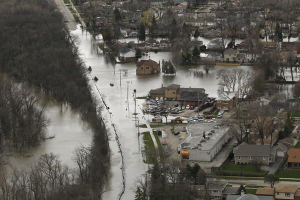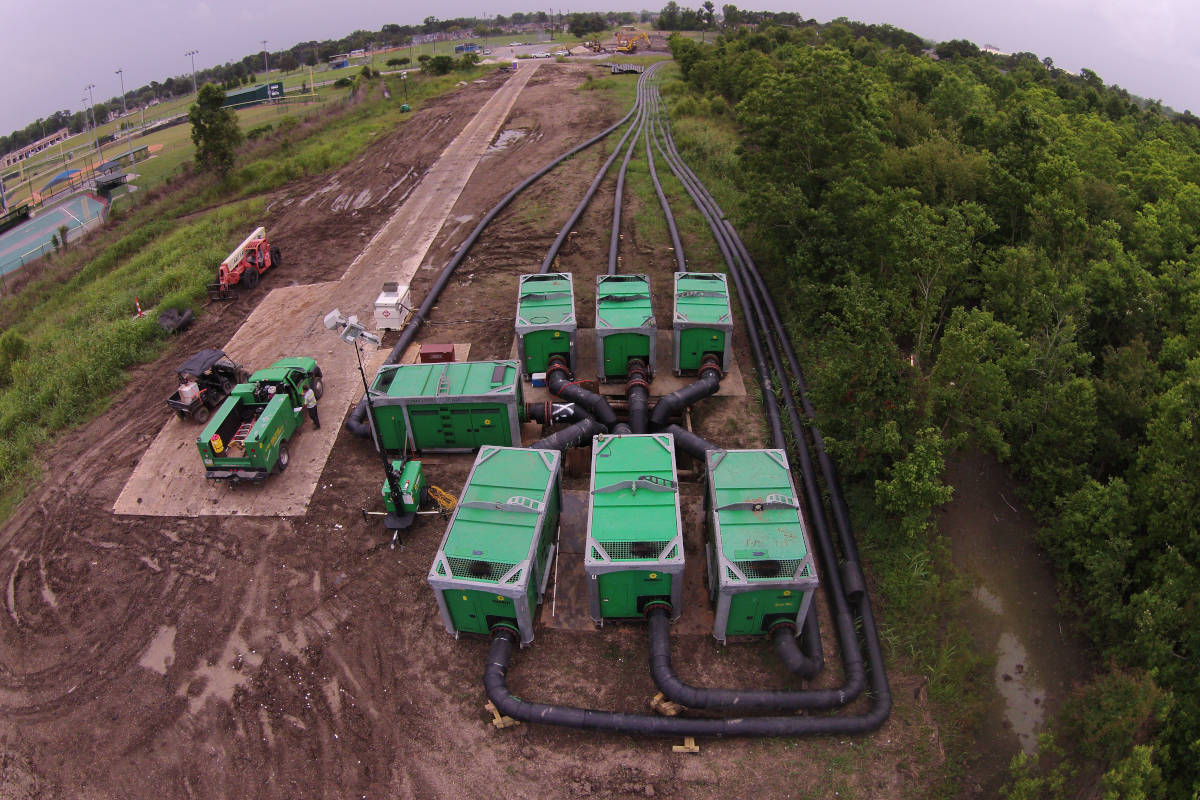
Taking Ownership of I/I Issues with Injection Grouting
In April 2013, the City of Naperville, Illinois, experienced 7.48 in. of rain in a 48-hour period, resulting in flooding, street closures and some basement back-ups. Nothing like a 100-year rain to reassess, rethink and reprioritize current practices for the benefit of the community and rate-payer.
After reviewing areas of backups, customer service calls, flow monitoring and ground water data, the City of Naperville — specifically Tony Conn, manager, Water Distribution and Collection Division — elected to target its rehabilitation efforts in a northern suburb called Cress Creek.
Naperville is unique in that it takes ownership of I/I to include private property — proactively rehabilitating to the foundation of the residence or commercial property.
RELATED: ‘Grout First,’ Right Answer to Solve Sullivan’s Island, S.C., I/I Issues
“After televising over 58,000 ft of sanitary mainlines, inspecting and locating 450 laterals and inspecting 355 manholes, we decided that the rehabilitation of mainlines, manholes and laterals was critical,” said Conn. “The problem was obvious: The groundwater infiltration was too heavy to engage CIPP lining alone – we had to stop this water migration first to prevent resin wash out of the new CIPP liner. The decision was equally obvious: We chose to injection grout the mainline joints, lateral connections and as far up the service as possible from the mainline. Originally, we wanted to go 80 ft up the lateral but had to settle for around 38 ft.”
20/20 Hindsight
However, even after years of sewer rehab work, high flows continued during heavy rain events. The City decided to televise the aforementioned sewer rehab work under the saturated ground condition to determine how the groundwater migrated between the host pipe and liner.
RELATED: Combination of Trenchless Methods Applied to Michigan Interceptor Project
“Water migrated where service connections were reinstated. Water migrated from the termination points at each manhole,” Conn said. “During our larger interceptor lining projects, you could see the groundwater level change and manholes and service laterals that never leaked before started leaking for the first time. The water table was rising and finding new entry points into the collection system. That’s when the light came on. We decided to start grouting mainlines before CIPP lining to stop water migration between the host pipe and CIPP liner, and be holistic in our approach to rehabilitate all the assets within the basin beyond mainlines to include manholes, laterals, and service connections.”
To attack this grouting project, John Manijak, business development manager at Michels Pipe Services, was the onsite project manager and took a top-down approach, beginning with the laterals, followed by mainlines and manholes.
The laterals were televised and cleaned with a high pressure jetter to remove roots and mineral deposits. The flow of infiltration from the laterals was relentless, but with a 40-ft lateral packer from the mainline provided 30 ft of effective grouting and the volume of water was tamed. The balance of the lateral to the foundation (approximately 100 ft) was achieved using a push packer from the cleanout.
One challenge constantly monitored by Manijak and field inspectors was the required four-minute gel time. During morning 70 degree temperatures, the gel time was set. But every 10 degree increase in temperature cuts the gel time in half so keeping the batch at a steady temperature was critical to allow the injections to permeate into the soil and seal the defect.
After sealing the laterals and mainlines, Manijak noticed the manholes that were not leaking before were now showing extensive infiltration meaning the groundwater level was rising and here’s why. The sewer trench is constructed similar to a French Drain — dig a trench, backfill with stone, lay pipe and cover. The French Drain effect is real — when the water can no longer gain access inside the pipe, it follows the path of least resistance along the outside of the pipe (water migration), which causes the water table to rise and find new pathways into manholes. Manholes were the last to be grouted and the system was completely sealed in preparation for the next step of CIPP Lining.
This was the moment that Conn realized the new way forward for Naperville was to mandate Grout First, Line Second for all components of the collection system. Going forward, the City of Naperville has a clear methodology for each asset:

Service Laterals: Going forward, lateral grouting is now a three-step process thanks to the city-installed clean-outs:
- Step 1: Mainline-lateral connection — grout with remote packer from the mainline
- Step 2: Mainline to clean-out — grout from the clean-out to mainline with push-packer
- Step 3: Clean-out to Foundation — grout from the clean-out to home/business foundation with push-packer.
Manhole Rehabilitation
- Step 1: Grout first to stop active leaks
- Step 2: Prepare surface with cement coating
- Step 3: Epoxy Liner applied at 250 mil
When is injection grouting important? According to Manijak:
- Anytime you have leaking joints in a mainline or lateral before lining
- If your mains or laterals are structurally sound and just have leaking joints
- Costs/funding is an issue
- To control water migration
- To control I/I
- To control resin wash out
Lining just the main will cause the groundwater to migrate to other points of entry — the service reinstatements or manholes. Naperville did not notice true flow reduction until the entire basin was rehabilitated at all points of entry and the control of water migration was achieved.
Proof in the numbers:
In June 2015, Naperville had the wettest month in Illinois history.
- 2.2 in. more rain in 2015 than 2013
- Groundwater in 2015 4.3 ft higher than 2013 level
- Ground water in 2015 5.8 ft higher than the sewer crown
Yet, the Average Daily Flow (ADF) was down .32 MGD than in 2013. And Naperville experienced ZERO wastewater backups.
RELATED: Daniel Magill Steps Down as Avanti International President; Frank Aguilar Named Successor
This sealed Naperville’s conviction to grout first in advance of every lining project. It is a more durable solution and more effective at controlling I/I as CIPP lining alone will not stop infiltration. Naperville is looking to the future with long range budgeting over the next 10 years for grouting and lining of mainlines, laterals and manholes.
Don Rigby is vice president of marketing and education at Avanti.





